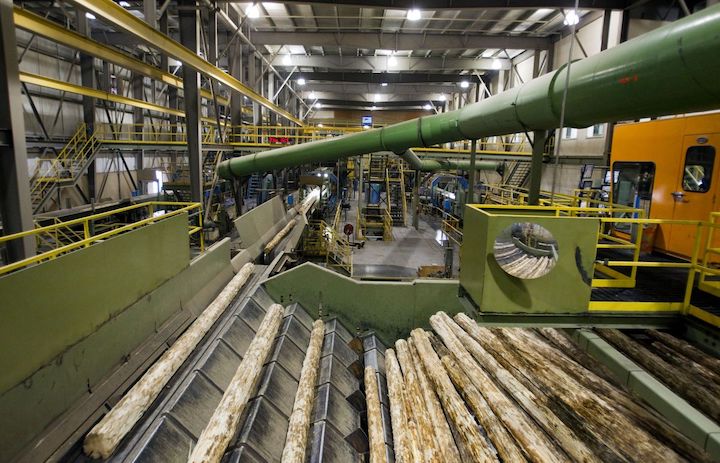North American lumber companies plan to ramp up production by expanding existing mills as strong home construction fuels the need for more wood.
West Fraser Timber Co., the world’s biggest lumber producer, plans to expand capacity at five of its lumber mills in the U.S. South. Interfor Corp. is rebuilding a sawmill in Georgia that is on track for completion by the end of 2021. Both companies expect home-building and renovation demand to continue supporting strong prices for wood products in the near future.

Interfor shares soared to a new high Friday after the company reported record quarterly earnings. West Fraser climbed as much as 1.9%.
The pandemic-fueled surge in home construction last year took North American sawmills by surprise, sending lumber prices to new records. U.S. futures this week hit $1,600 per 1,000 board feet for the first time, a four-fold increase from a year ago. While production has since ramped up, demand continues to outpace supply.
The expansions will be primarily in the southern U.S., where there is an abundance of planted timber available to be harvested. They should help to increase overall inventories in the country and push prices off their record highs over time. But that won’t come fast enough to alleviate supply constraints during the peak building season.
“We remain optimistic about the favorable market fundamentals we’re currently seeing supported by the underlying environmental benefits of building with wood, which have never been more clear and more widely accepted,” said West Fraser Chief Executive Raymond Ferris, speaking to analysts Friday.
Though 80% of the Vancouver-based company’s operations are now outside of British Columbia, which has historically provided significant amounts of spruce-pine-fir wood that is preferred by many home builders, Ferris noted the log costs in the province are rising.
West Fraser plans to invest roughly $150 million at five of its U.S. South lumber mills under its strategic capital program. Already, it’s increasing the number of working shifts at mills where possible, the company said.
“These investments will increase our capacity and increase the value of our products while reducing production costs overall,” Ferris told analysts.
Increased demand and stable supply have pushed North American lumber inventories to “critical levels,” said Bart Bender, senior vice president of sales and marketing for Interfor, speaking to analysts Friday morning.
“Even if there was an opportunity to build inventories, distribution channels would be reluctant at current market prices, he said. “We expect this scenario to exist through 2021 into 2022 and, as such, expect volatility in pricing with little to no buffer in inventories.”
A trucking shortage combined with severe winter weather in the first few months of the year slowed deliveries across the continent, where builders scramble to get their hands on building materials. West Fraser said it is attempting to secure additional transportation resources and is already seeing an improvement in shipping early in the second quarter.

Follow us on social media: